Review: Knolly Chilcotin 151
Knolly is a brand based in British Columbia and certainly isn’t afraid to go its own way. In a world of carbon-this and looks-like-a-Session that, Knolly’s bikes really have their own distinctive looks. If there wasn't any branding adorning the down tube you’d still be able to tell what it is at a glance.
At the heart of the appearance is the suspension platform. The system, which they name their Fourby4 isn’t merely a standard four bar layout, but is actually a four bar system that then drives a shock via a linkage. Although it looks very different it isn’t totally dissimilar in principle from something you might find on a bike like the Specialized Enduro.
Knolly Chilcotin 151 GX/Fox Details
• Wheel size: 29" front / 29" rear
• Travel: 151 / 160mm fork
• Aluminum frame
• 64.5 / 65.1 degree head tube angle
• 438 / 436.5 mm chainstays
• Sizes: M / L / XL
• 12 x 157 mm rear spacing
• 14.9 kg / 32.8 lb
• Complete bike - $6,199.99 USD
• knollybikes.com
• Wheel size: 29" front / 29" rear
• Travel: 151 / 160mm fork
• Aluminum frame
• 64.5 / 65.1 degree head tube angle
• 438 / 436.5 mm chainstays
• Sizes: M / L / XL
• 12 x 157 mm rear spacing
• 14.9 kg / 32.8 lb
• Complete bike - $6,199.99 USD
• knollybikes.com
The bike, unsurprisingly, offers 151mm of rear travel but there is also a 167mm option that is built around the same frame. Our bike came with a 160mm travel fork. In Canada, the Chilcotin region is known both for its all multi-day riding epics and high-consequence terrain, and not just because of the grizzly bears that populate the area. For a bike to truly merit the name it needs to be both efficient, comfortable and offer confidence-inspiring geometry to give the rider a real sense of security. But just how did it get on? We’ve had this bike over the spring months in Canada to find out.
Our test bike, the full-alloy Knolly Chilcotin 151 GX Fox Factory build, sits in the middle of the range in terms of price. There is a slightly cheaper build for $5,699 USD built with a GX drivetrain and RockShox suspension or a more expensive XT and Fox Factory build. The suspension is top line, the brakes are amply powerful for a mid-travel bike and there are no parts that would be need to be swapped straight away to open up the bike’s capabilities.
I think the bike, with its 151mm of travel, is sensibly equipped. Most of the parts aren’t the one’s you might find on an enduro race bike, and this is a good thing because it’s not meant to be a long travel brute - there is the 167mm version for that. Instead, it’s meant to be versatile. Small spec differences such as the EXO+ tires or the 36mm fork add up and make the bike more suited to what it was intended for - aggressive trail riding. If you need thicker casings or the latest, biggest, baddest fork, you’re probably well on your way to just changing the shock stroke and going for the bigger bike all round, which leads me nicely onto my next point - the frame.
Frame Details
The Knolly’s frame will almost certainly divide opinion. Its metal tubing almost embodies aspects of brutalism. Some parts of the bike are intricate and finely made, whereas other parts look slightly unrefined. In isolation, there are many parts that don’t look all too distinctive, but when standing back and looking at the BB area, it becomes a bike that looks elongated and stretched out.
The bike seems to be something of a medley of different traits as you look over it. One moment you’re looking at smooth and deliberate shaping of the linkage components, held together by titanium hardware, and the next you’re looking at a spaghetti junction of welds and metal tubing. Its cables and hoses, which disappear neatly into the frame at the head tube, and can be run in either orientation, then erupt and sprawl out the back of the seat tube before working their way down to the end of the stays.
![photo]()
The frame itself doubles up its duties and services the needs of both 167mm Chilcotin owners as well as the 151. They do this by changing the stroke of the suspension. Personally, while understand this approach, I do think it leaves a little too much for one geometry adjustment to counter, in this instance the axle to crown difference as you change fork length. I prefer longer travel bikes to have steeper seat tubes and shorter travel ones to have slacker ones. With Knolly’s solution of merely changing the fork travel, it does the inverse of this.
![photo]()
The reasoning for my preference is all about what I intend to climb the bike up and where it puts my weight. On an enduro bike, I am more likely to crawl up steep fire roads before descending, where the gradient of the terrain counteracts a steep seat tube to put your weight between the two axles. However, on flatter or more undulating terrain, the very type I am more likely to ride on a slightly shorter travel bike, the forward weight bias puts more weight into my hands.
The Chilcotin does have a geometry adjustment chip, but instead of it being Slack and Steep, it’s labeled as Neutral and Slack. This terminology shouldn’t be overlooked. Going into slack on this bike offers a very significant adjustment to the feel of the bike when descending.
The Knolly’s frame will almost certainly divide opinion. Its metal tubing almost embodies aspects of brutalism. Some parts of the bike are intricate and finely made, whereas other parts look slightly unrefined. In isolation, there are many parts that don’t look all too distinctive, but when standing back and looking at the BB area, it becomes a bike that looks elongated and stretched out.
The bike seems to be something of a medley of different traits as you look over it. One moment you’re looking at smooth and deliberate shaping of the linkage components, held together by titanium hardware, and the next you’re looking at a spaghetti junction of welds and metal tubing. Its cables and hoses, which disappear neatly into the frame at the head tube, and can be run in either orientation, then erupt and sprawl out the back of the seat tube before working their way down to the end of the stays.

I like SRAM Eagle, but one gripe is the outer self-extracting crank bolts that seem to constantly work loose and fall off (it's missing in this photo).
The frame itself doubles up its duties and services the needs of both 167mm Chilcotin owners as well as the 151. They do this by changing the stroke of the suspension. Personally, while understand this approach, I do think it leaves a little too much for one geometry adjustment to counter, in this instance the axle to crown difference as you change fork length. I prefer longer travel bikes to have steeper seat tubes and shorter travel ones to have slacker ones. With Knolly’s solution of merely changing the fork travel, it does the inverse of this.
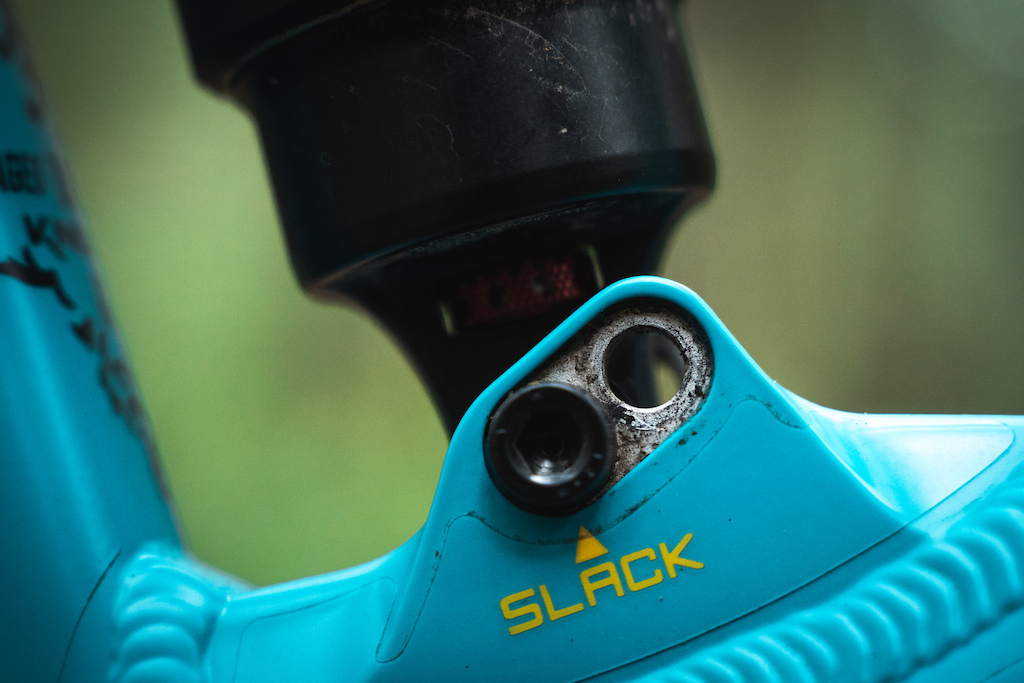
Slackness isn't just about head and seat tube angle - but a flip chip can have a pronounced effect on where our weight is placed on a bike.
The reasoning for my preference is all about what I intend to climb the bike up and where it puts my weight. On an enduro bike, I am more likely to crawl up steep fire roads before descending, where the gradient of the terrain counteracts a steep seat tube to put your weight between the two axles. However, on flatter or more undulating terrain, the very type I am more likely to ride on a slightly shorter travel bike, the forward weight bias puts more weight into my hands.
The Chilcotin does have a geometry adjustment chip, but instead of it being Slack and Steep, it’s labeled as Neutral and Slack. This terminology shouldn’t be overlooked. Going into slack on this bike offers a very significant adjustment to the feel of the bike when descending.
Geometry
The Knolly has many of the hallmarks of a mid travel enduro bike. Whether it’s the 64.5-degree head angle, or the stack of just under 630mm, it doesn’t look on paper like a large departure from what you might expect.
There are a few dimensions on the chart that do draw your gaze. Most notably, the 492mm reach on a size large. Whilst this isn’t that much larger than some more aggressive bikes, it features this length paired with comparatively short 438mm chainstays. These dimensions alone, irrespective of the head angle or stack, could potentially dominate the feel of the bike as the weight of the rider is going to be very rearward. Of course, that in itself isn’t a bad thing - it rather just depends what terrain the bike will be ridden on.
A frame sharing duties between two models of differing travel is nothing new, and I don’t think this is a problem in itself, but that's not to say it doesn't have a knock on effect.
As a consequence, the effective top tube of the bike, so how big the bike feels when seated, is relatively large. How we measure effective top tube isn’t a perfect art, and there can be a disparity between brands. That said, for me at 183cm I found the distance between the contact points to be too big, and I subsequently moved the saddle forward on its rails, which also steepens the effective seat tube angle further.
When testing bikes, sizing is so important. As a reviewer, I think it’s important to listen to a brand, how they size their bikes and how you fit into their size chart. It might just be they’re pursuing a particular trait, or have their own ideology when it comes to geometry that is a little unconventional. When sizing this bike, I asked Knolly to send me the size they felt was most appropriate, and the large should be very appropriate for me as, at 183cm, I stand exactly in the middle of the 178 - 188cm window for this frame size.
The Knolly has many of the hallmarks of a mid travel enduro bike. Whether it’s the 64.5-degree head angle, or the stack of just under 630mm, it doesn’t look on paper like a large departure from what you might expect.
There are a few dimensions on the chart that do draw your gaze. Most notably, the 492mm reach on a size large. Whilst this isn’t that much larger than some more aggressive bikes, it features this length paired with comparatively short 438mm chainstays. These dimensions alone, irrespective of the head angle or stack, could potentially dominate the feel of the bike as the weight of the rider is going to be very rearward. Of course, that in itself isn’t a bad thing - it rather just depends what terrain the bike will be ridden on.
A frame sharing duties between two models of differing travel is nothing new, and I don’t think this is a problem in itself, but that's not to say it doesn't have a knock on effect.
As a consequence, the effective top tube of the bike, so how big the bike feels when seated, is relatively large. How we measure effective top tube isn’t a perfect art, and there can be a disparity between brands. That said, for me at 183cm I found the distance between the contact points to be too big, and I subsequently moved the saddle forward on its rails, which also steepens the effective seat tube angle further.
When testing bikes, sizing is so important. As a reviewer, I think it’s important to listen to a brand, how they size their bikes and how you fit into their size chart. It might just be they’re pursuing a particular trait, or have their own ideology when it comes to geometry that is a little unconventional. When sizing this bike, I asked Knolly to send me the size they felt was most appropriate, and the large should be very appropriate for me as, at 183cm, I stand exactly in the middle of the 178 - 188cm window for this frame size.
Suspension Design
As stated, Knolly's Fourby4 system is a linkage driven four bar. They do this because they feel it offers a greater level of tuning rather than including the shock within the four bar layout, which would make it harder to isolate certain characteristics of the suspension.
Knolly breaks down the needs of a suspension system into four main quarters - traction, pedalling, braking and rear shock control. Often, adjusting one will consequently change the value of another. An extreme example of this would be a single pivot - where everything is very much intertwined.
The brand also feel that it’s best to use a pedaling platform on a shock. I’m really coming round to this approach. I think a mountain bike should be made to best climb mountains and non-paved terrain. Part of that means offering a platform that doesn’t extend too much under pedaling load. Bikes with a high value of anti-squat can often lose out in terms of sensitivity and grip on rougher terrain because the shock resists going into its stroke and is too far orientated towards resisting pedal-induced-bobbing, even when tracking over lumps and bumps, which means it can compromise both comfort and tracking. If you happen to climb a smooth road on your mountain bike I think flicking one switch is a very convenient solution for a mid travel bike that is expected to do so much and can increase the versatility of our bikes even further.
As stated, Knolly's Fourby4 system is a linkage driven four bar. They do this because they feel it offers a greater level of tuning rather than including the shock within the four bar layout, which would make it harder to isolate certain characteristics of the suspension.
Knolly breaks down the needs of a suspension system into four main quarters - traction, pedalling, braking and rear shock control. Often, adjusting one will consequently change the value of another. An extreme example of this would be a single pivot - where everything is very much intertwined.
The brand also feel that it’s best to use a pedaling platform on a shock. I’m really coming round to this approach. I think a mountain bike should be made to best climb mountains and non-paved terrain. Part of that means offering a platform that doesn’t extend too much under pedaling load. Bikes with a high value of anti-squat can often lose out in terms of sensitivity and grip on rougher terrain because the shock resists going into its stroke and is too far orientated towards resisting pedal-induced-bobbing, even when tracking over lumps and bumps, which means it can compromise both comfort and tracking. If you happen to climb a smooth road on your mountain bike I think flicking one switch is a very convenient solution for a mid travel bike that is expected to do so much and can increase the versatility of our bikes even further.
Test Bike Setup
Setting up the Knolly wasn’t all too easy. In fact, I struggled to find a setup that fit me dimensionally while also achieving a fore and balance to my liking. I found that every time I made a positive change, it would have an obvious drawback, too.
In terms of the cockpit, I ended up on a setup where the saddle was forward on its rails and I went down from a 40 to 35mm length stem and moved up from 25mm to 30mm rise bars. These small changes definitely moved the fit in the right direction, but I wouldn’t say that they ever totally satisfied my needs for how I wanted the bike to ride. With this setup, I was happy with where my feet, hands and saddle were - but rather where the bike fit around them, and where they placed my weight on the bike, never really felt great. At the heart of this, I think for me, is the 492mm reach, the long effective top tube and the suspension action under braking.
Setting up the Knolly wasn’t all too easy. In fact, I struggled to find a setup that fit me dimensionally while also achieving a fore and balance to my liking. I found that every time I made a positive change, it would have an obvious drawback, too.
In terms of the cockpit, I ended up on a setup where the saddle was forward on its rails and I went down from a 40 to 35mm length stem and moved up from 25mm to 30mm rise bars. These small changes definitely moved the fit in the right direction, but I wouldn’t say that they ever totally satisfied my needs for how I wanted the bike to ride. With this setup, I was happy with where my feet, hands and saddle were - but rather where the bike fit around them, and where they placed my weight on the bike, never really felt great. At the heart of this, I think for me, is the 492mm reach, the long effective top tube and the suspension action under braking.
Henry Quinney
Location: Here, there, everywhere
Age: 29
Height: 183 cm / 6'
Inseam: 82 cm / 32.5"
Weight: 79 kg / 174 lbs
Industry affiliations / sponsors: None
Instagram: @henryquinney
Location: Here, there, everywhere
Age: 29
Height: 183 cm / 6'
Inseam: 82 cm / 32.5"
Weight: 79 kg / 174 lbs
Industry affiliations / sponsors: None
Instagram: @henryquinney
I ran my normal Fox 36 settings, which are very close to the base damper settings. I started running base settings on the shock, but eventually came to open up the compression settings completely, which I’ll come to explain in due course. I ran around 30% sag.
Climbing
I really like the way the Chilcotin climbed. It seemed to offer a great middle ground of so many traits. Some bikes track better but feel softer under pedaling load, while others handle accelerations better, but struggle to let the wheel follow the ground and deliver constant grip. This bike managed to balance both of these traits so well. It feels solid under pedaling as it resists diving and lurches even when out of the saddle. That’s not to say it didn’t react, but rather I never felt any need to reach for the compression lever. On fire roads, it was quite happy just doing its thing and was never the source of any complaint. That said, if you do want something ultra-efficient on tarmac climbs the lever is pedal-switch is always there.
On more technical climbs, it follows the shape of the ground well, and doesn’t wallow as you throw the bike or move your weight forward on stepped roots. Its solid platform maintains grip really well, especially considering how muted it is in its response to pedaling load. Whether seated, hovering your weight above the saddle or standing up, I was always dutifully impressed with the composure the Knolly Fourby4 system worked. It’s hard to ever get a suspension system that gives everyone what they want, but I think Knolly have managed to give a platform that is going to give most riders what they like in most situations - and that isn’t an easy thing to do. So far, so good.
As mentioned previously, the bars were a little too far away for me in its stock setup. The changes I experimented with (a shorter stem, higher rise bar and moving the saddle forward) made the bike feel much more “in range”.
As we rise or shorten the cockpit, it will affect how much weight is applied to the front wheel - which is going to become something of a theme when descending the bike. I would rather prioritise having controls in my range of movement, and being able to extend my arms to weight them as I please, rather than having a longer stem and lower bar, which in theory should put more weight on the front, but is predicated on me being able to reach them effectively. I think the bike's weight distribution is salvaged by its steep seat tube angle, and I lay the blame at the feet of the very long reach and subsequently long top tube, which just dominates the conversation about how this bike fits.
I really like the way the Chilcotin climbed. It seemed to offer a great middle ground of so many traits. Some bikes track better but feel softer under pedaling load, while others handle accelerations better, but struggle to let the wheel follow the ground and deliver constant grip. This bike managed to balance both of these traits so well. It feels solid under pedaling as it resists diving and lurches even when out of the saddle. That’s not to say it didn’t react, but rather I never felt any need to reach for the compression lever. On fire roads, it was quite happy just doing its thing and was never the source of any complaint. That said, if you do want something ultra-efficient on tarmac climbs the lever is pedal-switch is always there.
On more technical climbs, it follows the shape of the ground well, and doesn’t wallow as you throw the bike or move your weight forward on stepped roots. Its solid platform maintains grip really well, especially considering how muted it is in its response to pedaling load. Whether seated, hovering your weight above the saddle or standing up, I was always dutifully impressed with the composure the Knolly Fourby4 system worked. It’s hard to ever get a suspension system that gives everyone what they want, but I think Knolly have managed to give a platform that is going to give most riders what they like in most situations - and that isn’t an easy thing to do. So far, so good.
As mentioned previously, the bars were a little too far away for me in its stock setup. The changes I experimented with (a shorter stem, higher rise bar and moving the saddle forward) made the bike feel much more “in range”.
As we rise or shorten the cockpit, it will affect how much weight is applied to the front wheel - which is going to become something of a theme when descending the bike. I would rather prioritise having controls in my range of movement, and being able to extend my arms to weight them as I please, rather than having a longer stem and lower bar, which in theory should put more weight on the front, but is predicated on me being able to reach them effectively. I think the bike's weight distribution is salvaged by its steep seat tube angle, and I lay the blame at the feet of the very long reach and subsequently long top tube, which just dominates the conversation about how this bike fits.
Descending
While the metal, burly looking frame delivered excellent performance on the climbs, how does it cope with what many people associate Knolly with - gravity-oriented bikes designed to be pushed hard on technical terrain? Truthfully, the Knolly is a fascinating bike, for both good and bad. It has certain traits that are easy to admire, and some that are hard to understand. Let’s start with the good.
All in all, I think Knolly has delivered a suspension system that is going to be good for a lot of riders. It has no nasty surprises, it’s consistent and easy to get along with and offers a great level of support and damping when charging through chunkier terrain, while also offering a reasonable amount of tracking. Much like its climbing characteristics, it’s not something that overwhelms in any one regard - but rather does most things very well. If you want something that’s going to climb well, support you as you drop your heels and hit things without care, the Knolly is going to be a good candidate. For a 150mm bike, it feels decidedly bigger and more confident than most of similar travel. It isn’t some that flutters through its stroke - but in lieu of that it does offer support and predictability. This is going to sound shallow, but it has the feeling of a shorter travel enduro bike, rather than a longer travel trail bike.
Again, the drawbacks of the Knolly come down to fit and dimensions. Although some small dimension changes rescued the performance on the climbs, I didn’t ever feel like I really got myself feeling as comfortable as I’d like.
At the heart of its problem is the issue of how rearward your weight is. Having a 492mm reach isn’t inherently bad, but it needs to be balanced with a longer chainstay. When you fit longer stays on a bike it’s going to express more weight on the front wheel through your feet, you can then add additional weight to complement this with your hands. This opened up two problems. Firstly, in its stock setup the bars were too far away for me to ever feel like I wasn’t reaching for them, and secondly, when I put a shorter stem and higher bar on the bike, further compromising how the front was weighted, I got a bike that lacked stability on the front, especially under braking. Either way, it wasn’t great. I didn’t want to run my bars lower because I felt I was already too stretched out and, in the stock setup, the bars were too far away and not high enough.
Throughout testing, I ran the bike in both settings. I would say this bike feels far, far better in its steeper position. It just has so much more weight expressed through your feet on the front wheel. It’s only half a degree of adjustment, steepening to 65 degrees, but boy, what a difference it makes. The front feels noticeably less fidgety, especially under heaving braking load on looser terrain. All that said, while I think it brings the balance to within range, I didn’t ever feel it was that easy to just get on and ride.
It also raises the BB by around 10mm to 344mm which, at the very least, was far more in keeping with what I’m used to. The higher setting also felt like my feet were applying weight above the contact patch on the tire, as opposed to pushing through and overwhelming it.
The issue of fore and aft balance is compounded by the traits of the suspension. The bike feels like it really resists braking forces - which can be a good thing. It means that your braking forces are kept independant and the bike isn’t going to lurch deep into its stroke when you apply the anchors. But it also means that as you apply the brakes it can begin to pitch more weight forward. Whether you like this trait or not is entirely personal preference. Some people prefer bikes to sink into their travel when on the brakes - others prefer the bike to keep those braking forces separated and keep the rear wheel tracking. But there is an important distinction to make when talking about these traits and their relation to geometry.
When you’re feeling strong on the bike, and your controls are in reach and your weight is neutral, this isn’t a problem in itself. In the Neutral mode, with your weight more central, it blends far better into the overall feeling of the bike. In the slacker setting, it gives a bike that is almost jarring to ride and that is only ever a moment away from undermining your confidence in it.
I genuinely believe that if the reach was shorter, or the stays were longer, or if the front was higher this wouldn’t be an issue and would come down to a small preference within the larger picture of how the bike rides. But, when already on the back foot and searching for a sense of stability it becomes an unwanted compilation. I eventually took all compression adjustment off the shock, which did lessen the transfer of weight under braking but it was still very present.
On steep trails, the rearward weight balance of the slack position begins to make more sense. If you’re riding steep, loamy trails that aren’t particularly rough then the consistent suspension platform and short stays means that the bike really comes alive, but even then, dimensionally I don’t think it makes absolute sense.
While riding this bike, it's not massively stiff. It’s not a big issue, and really comes down to personal preference, but for a frame that shares duties with a 167mm version there could be room to make it a little stiffer.
I’m in the fortunate position where I don’t actually make bikes and send them in for know-it-alls to tell me how to do it on websites, but I would love to see this Fourby4 platform with at least a longer stay or a shorter reach. It would help weight the front more, or help you resist load transfer more by put your controls more in range, and let your push on the front, almost as if you’re doing a press-up, and driving the front. As it is, there just isn’t enough weight on the front to avoid this lurch. This is problematic, because as you’re entering a turn or more technical section and you begin to scrub speed it adds an element of unpredictability. I think if there was more weight on the front it would open up the versatility of the bike hugely and give a bike that can be bossed and pushed around - instead of, as a rider, feeling like the bike is often getting away from you.
Failing that, if the Knolly do want to remain loyal to their geometry ideals, I would really like to see a bike that is happier to go into its stroke under braking, if only to prevent the rider's mass getting pushed more forward under heavy braking.
Maybe also if I was a bit taller than the controls would also feel more in range. We’re all different shapes and sizes but for me I could never quite feel settled. The medium would also have been slightly too small. The reach might have been a little short but usable, but the stack height would also drop to the low 620s - which is less than ideal to ride the steeper trails that this bike excels on.
While the metal, burly looking frame delivered excellent performance on the climbs, how does it cope with what many people associate Knolly with - gravity-oriented bikes designed to be pushed hard on technical terrain? Truthfully, the Knolly is a fascinating bike, for both good and bad. It has certain traits that are easy to admire, and some that are hard to understand. Let’s start with the good.
All in all, I think Knolly has delivered a suspension system that is going to be good for a lot of riders. It has no nasty surprises, it’s consistent and easy to get along with and offers a great level of support and damping when charging through chunkier terrain, while also offering a reasonable amount of tracking. Much like its climbing characteristics, it’s not something that overwhelms in any one regard - but rather does most things very well. If you want something that’s going to climb well, support you as you drop your heels and hit things without care, the Knolly is going to be a good candidate. For a 150mm bike, it feels decidedly bigger and more confident than most of similar travel. It isn’t some that flutters through its stroke - but in lieu of that it does offer support and predictability. This is going to sound shallow, but it has the feeling of a shorter travel enduro bike, rather than a longer travel trail bike.
Again, the drawbacks of the Knolly come down to fit and dimensions. Although some small dimension changes rescued the performance on the climbs, I didn’t ever feel like I really got myself feeling as comfortable as I’d like.
Sometimes I felt the bike was getting away from me as I was stretching for the controls. These photos showcase this well.
At the heart of its problem is the issue of how rearward your weight is. Having a 492mm reach isn’t inherently bad, but it needs to be balanced with a longer chainstay. When you fit longer stays on a bike it’s going to express more weight on the front wheel through your feet, you can then add additional weight to complement this with your hands. This opened up two problems. Firstly, in its stock setup the bars were too far away for me to ever feel like I wasn’t reaching for them, and secondly, when I put a shorter stem and higher bar on the bike, further compromising how the front was weighted, I got a bike that lacked stability on the front, especially under braking. Either way, it wasn’t great. I didn’t want to run my bars lower because I felt I was already too stretched out and, in the stock setup, the bars were too far away and not high enough.
Throughout testing, I ran the bike in both settings. I would say this bike feels far, far better in its steeper position. It just has so much more weight expressed through your feet on the front wheel. It’s only half a degree of adjustment, steepening to 65 degrees, but boy, what a difference it makes. The front feels noticeably less fidgety, especially under heaving braking load on looser terrain. All that said, while I think it brings the balance to within range, I didn’t ever feel it was that easy to just get on and ride.
It also raises the BB by around 10mm to 344mm which, at the very least, was far more in keeping with what I’m used to. The higher setting also felt like my feet were applying weight above the contact patch on the tire, as opposed to pushing through and overwhelming it.
The issue of fore and aft balance is compounded by the traits of the suspension. The bike feels like it really resists braking forces - which can be a good thing. It means that your braking forces are kept independant and the bike isn’t going to lurch deep into its stroke when you apply the anchors. But it also means that as you apply the brakes it can begin to pitch more weight forward. Whether you like this trait or not is entirely personal preference. Some people prefer bikes to sink into their travel when on the brakes - others prefer the bike to keep those braking forces separated and keep the rear wheel tracking. But there is an important distinction to make when talking about these traits and their relation to geometry.
When you’re feeling strong on the bike, and your controls are in reach and your weight is neutral, this isn’t a problem in itself. In the Neutral mode, with your weight more central, it blends far better into the overall feeling of the bike. In the slacker setting, it gives a bike that is almost jarring to ride and that is only ever a moment away from undermining your confidence in it.
I genuinely believe that if the reach was shorter, or the stays were longer, or if the front was higher this wouldn’t be an issue and would come down to a small preference within the larger picture of how the bike rides. But, when already on the back foot and searching for a sense of stability it becomes an unwanted compilation. I eventually took all compression adjustment off the shock, which did lessen the transfer of weight under braking but it was still very present.
On steep trails, the rearward weight balance of the slack position begins to make more sense. If you’re riding steep, loamy trails that aren’t particularly rough then the consistent suspension platform and short stays means that the bike really comes alive, but even then, dimensionally I don’t think it makes absolute sense.
While riding this bike, it's not massively stiff. It’s not a big issue, and really comes down to personal preference, but for a frame that shares duties with a 167mm version there could be room to make it a little stiffer.
I’m in the fortunate position where I don’t actually make bikes and send them in for know-it-alls to tell me how to do it on websites, but I would love to see this Fourby4 platform with at least a longer stay or a shorter reach. It would help weight the front more, or help you resist load transfer more by put your controls more in range, and let your push on the front, almost as if you’re doing a press-up, and driving the front. As it is, there just isn’t enough weight on the front to avoid this lurch. This is problematic, because as you’re entering a turn or more technical section and you begin to scrub speed it adds an element of unpredictability. I think if there was more weight on the front it would open up the versatility of the bike hugely and give a bike that can be bossed and pushed around - instead of, as a rider, feeling like the bike is often getting away from you.
Failing that, if the Knolly do want to remain loyal to their geometry ideals, I would really like to see a bike that is happier to go into its stroke under braking, if only to prevent the rider's mass getting pushed more forward under heavy braking.
Maybe also if I was a bit taller than the controls would also feel more in range. We’re all different shapes and sizes but for me I could never quite feel settled. The medium would also have been slightly too small. The reach might have been a little short but usable, but the stack height would also drop to the low 620s - which is less than ideal to ride the steeper trails that this bike excels on.
How Does It Compare?
Recently, I reviewed another bike from a brand with their roots firmly in the pacific northwest - the Kona Process 153.
The Kona was such an easy bike to ride and, although not perfect, was a bike endowed with problems and virtues completely antipodal to the Knolly's. That said, it’s very interesting to see two bikes that are so very very different, even though they have almost identical travel and dimensions.
The Process, as I remarked in that review, is more aligned with an all-mountain and trail bike rather than a bike that is trying to replicate or replace enduro bikes. It’s a bike that is well suited to a whole variety of trails instead of a select few steeper ones, is very easy to ride and very comfortable.
The Knolly, on the other hand thrives in the steep - and is definitely better suited to somebody that is looking for a more efficient and quicker handling enduro bike than somebody who wants a trail bike with added versatility.
The Process though is far more balanced and I would say easier to ride. Although it doesn’t have the big hit resistance of the Knolly, and could do with more compression damping as standard - it’s easier to just get on and ride, it’s more predictable and far more confidence inspiring.
Technical Report
Fox 36 Factory: The 36 is not only a great fork but it's so well suited to bikes like these. The base settings and technical information Fox provide are largely excellent and are helping more and more riders unlock the potential of their high-end suspension - myself included.
Maxxis Tires: Although we don't spec control tires on these reviews, it seems like a lot of brands are settling on the Assegai and DHR2 combo. The Exo+ casing, much like the Fox 36 on the front, is great not because it's on the extreme end of what bike's are capable of, but because it offers a good compromise and cherry picks the attributes from both ends of the spectrum. Yes, you might need downhill tyres on your trail bike, and some people will, but for most people in most places this is the right tire for this bike.
SRAM Code RSC: The Code can sometimes come in for a bit of flack for not being powerful enough. Whilst it may be true that there are more powerful brakes out there, I love the feel, tunability and ergonomics of the Code RSCs, especially on mid-travel bikes. For the small weight penalty for downhill brakes, I can see little to no reason to use anything lighter on a bike that has such broad aspirations.
Rockshox Reverb Stealth: After what seems like an eternity of cable actuated droppers, it felt quite nice to have the solid reassuring feel of a hydraulic system again. Of course it has no real performance benefit, and won't save you precious seconds on your custom made Strava Loop that the local shredders don't ride, but I appreciated it and its closed system during the warm wet months of spring.
Fox 36 Factory: The 36 is not only a great fork but it's so well suited to bikes like these. The base settings and technical information Fox provide are largely excellent and are helping more and more riders unlock the potential of their high-end suspension - myself included.
Maxxis Tires: Although we don't spec control tires on these reviews, it seems like a lot of brands are settling on the Assegai and DHR2 combo. The Exo+ casing, much like the Fox 36 on the front, is great not because it's on the extreme end of what bike's are capable of, but because it offers a good compromise and cherry picks the attributes from both ends of the spectrum. Yes, you might need downhill tyres on your trail bike, and some people will, but for most people in most places this is the right tire for this bike.
SRAM Code RSC: The Code can sometimes come in for a bit of flack for not being powerful enough. Whilst it may be true that there are more powerful brakes out there, I love the feel, tunability and ergonomics of the Code RSCs, especially on mid-travel bikes. For the small weight penalty for downhill brakes, I can see little to no reason to use anything lighter on a bike that has such broad aspirations.
Rockshox Reverb Stealth: After what seems like an eternity of cable actuated droppers, it felt quite nice to have the solid reassuring feel of a hydraulic system again. Of course it has no real performance benefit, and won't save you precious seconds on your custom made Strava Loop that the local shredders don't ride, but I appreciated it and its closed system during the warm wet months of spring.
Pros
+ Efficient and competent climber
+ Excellent support when plowing through jank
+ Ready-to-rip spec choices
Cons
- Long reach paired with shorter chainstays doesn't feel very balanced
- The mass transfer under braking when combined with the long reach can make it challenging to feel comfortable
Pinkbike's Take
Author Info:
Must Read This Week
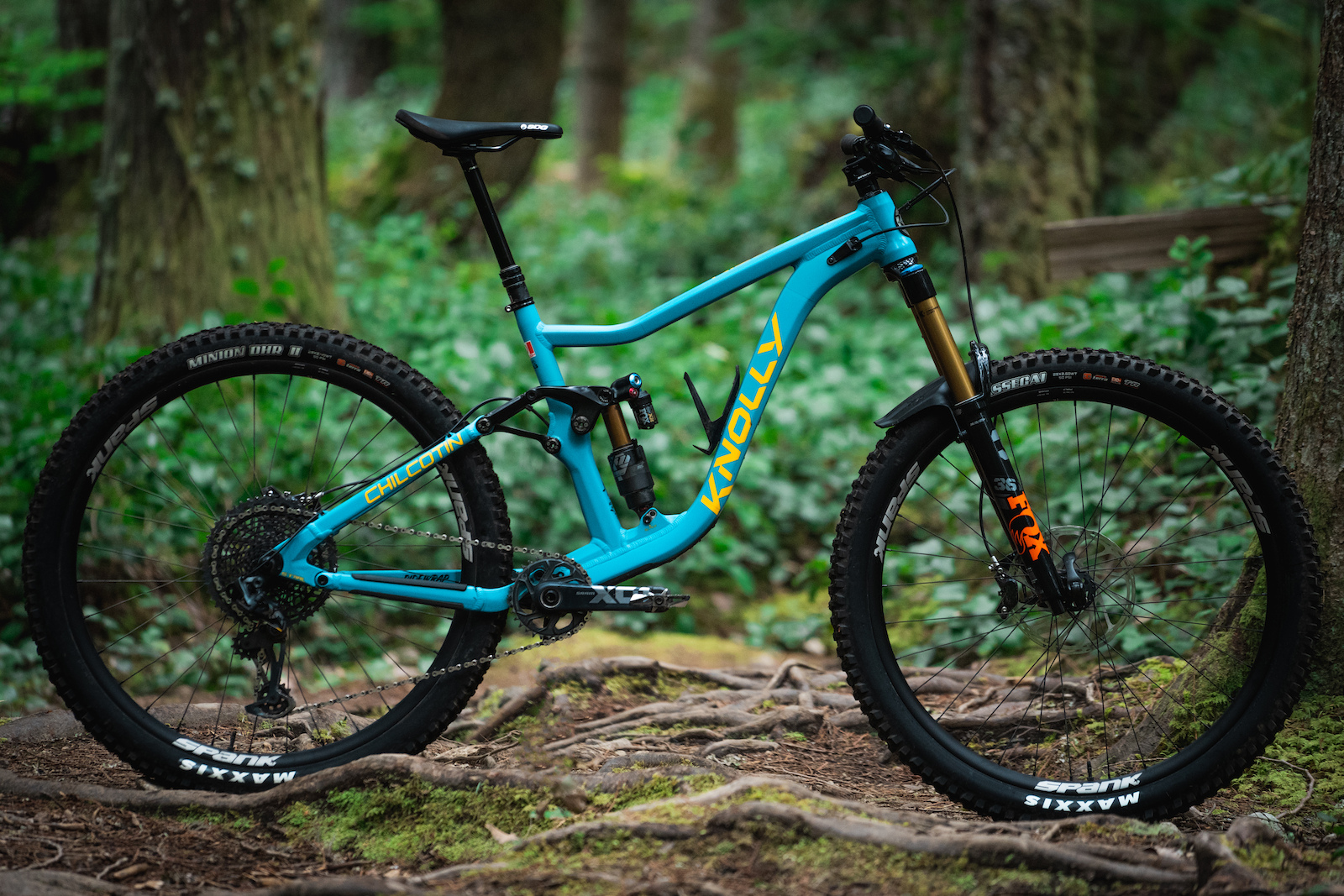
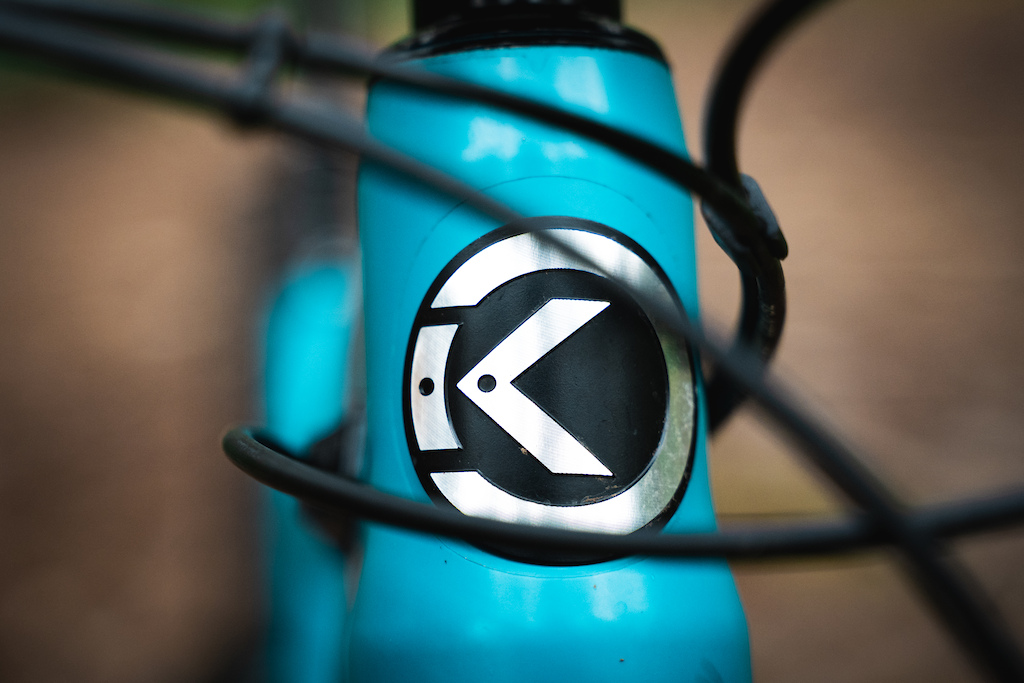






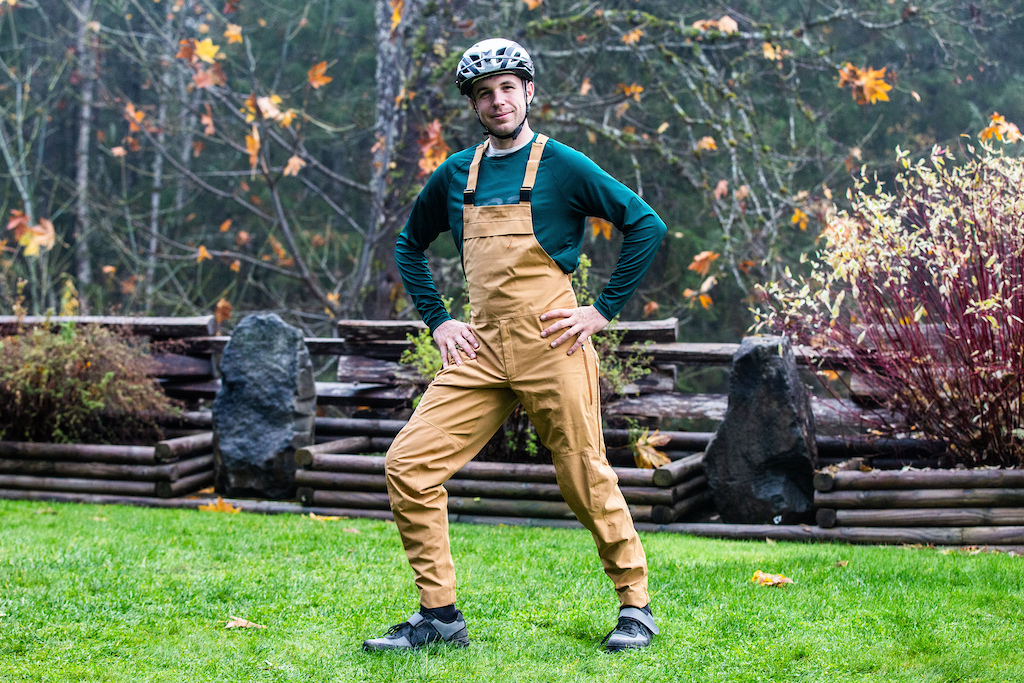
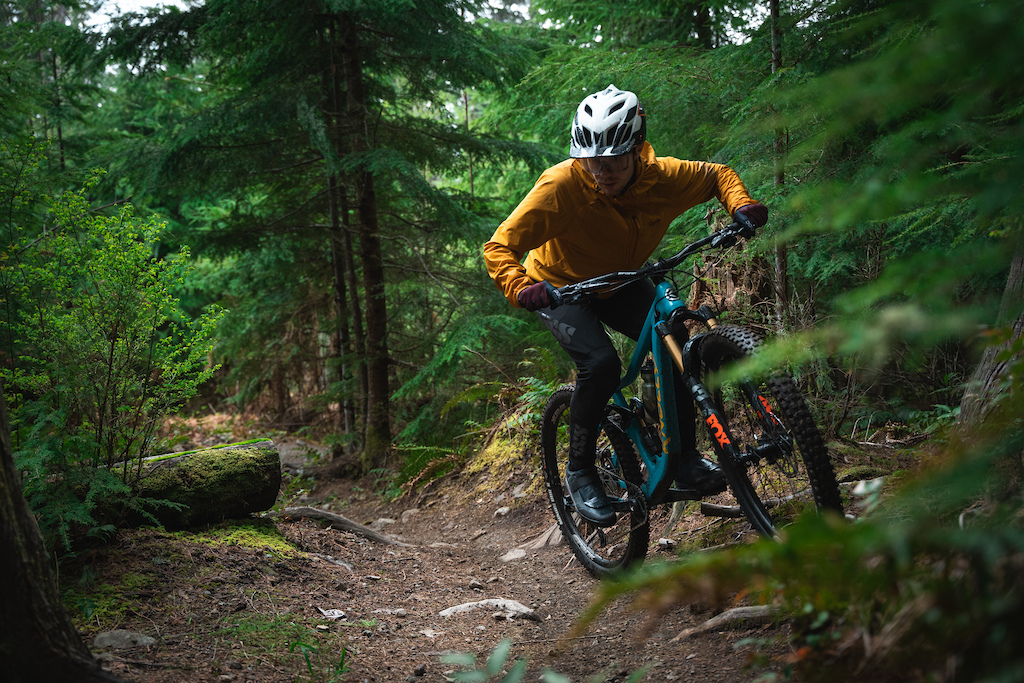
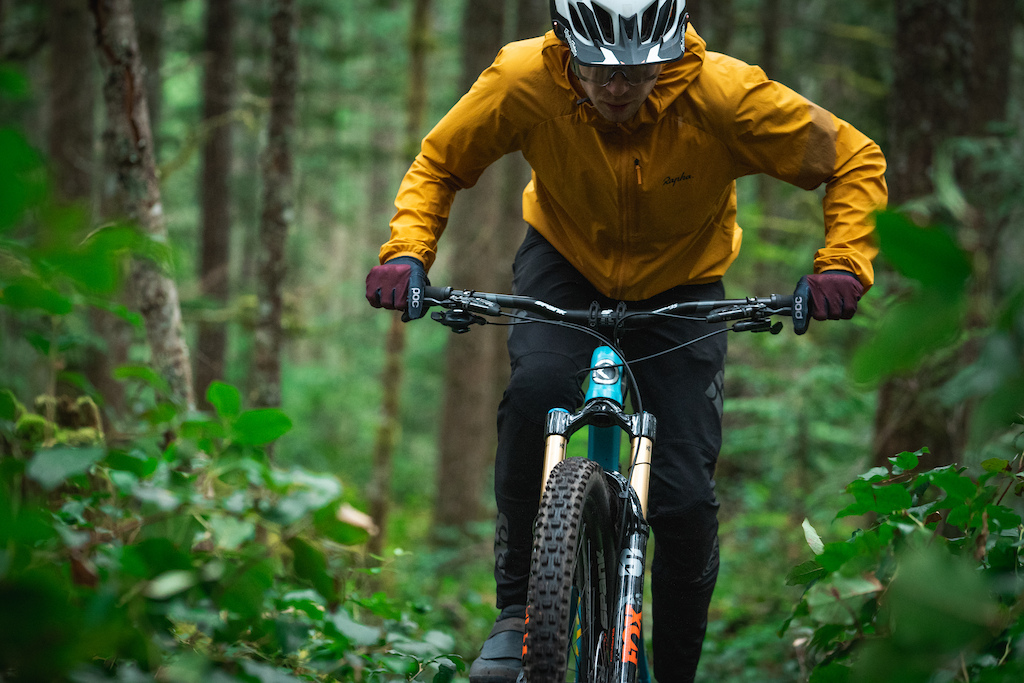

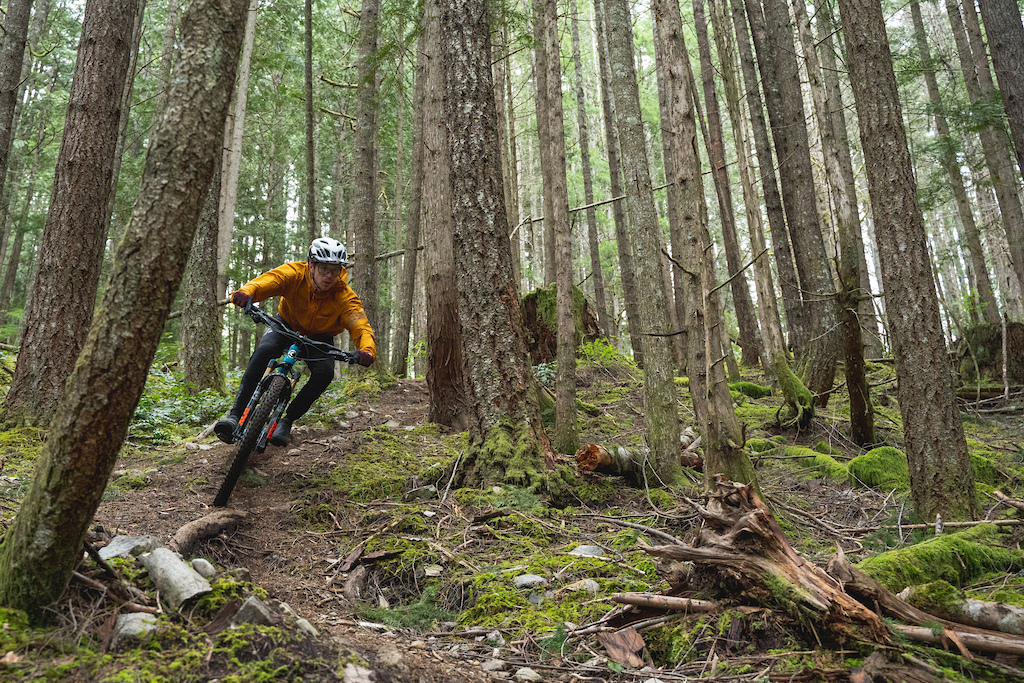

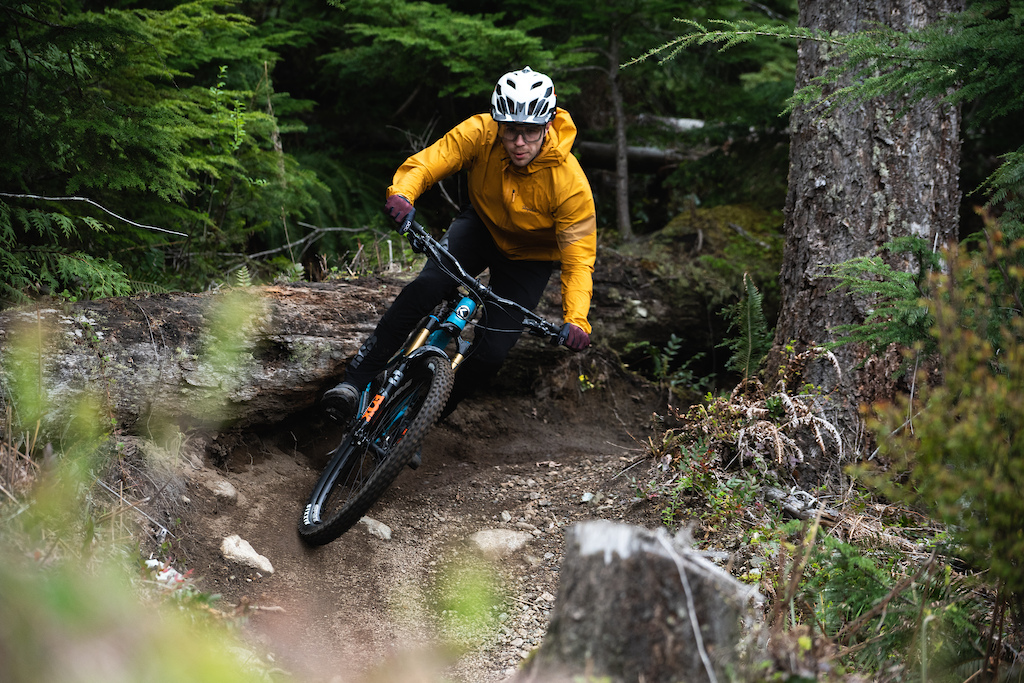
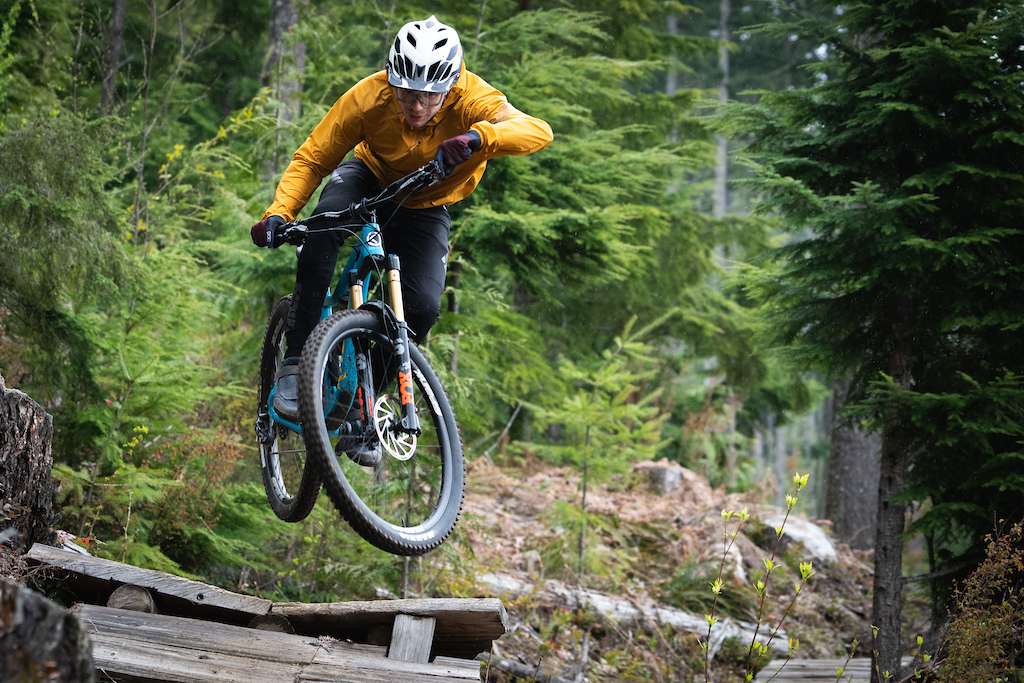

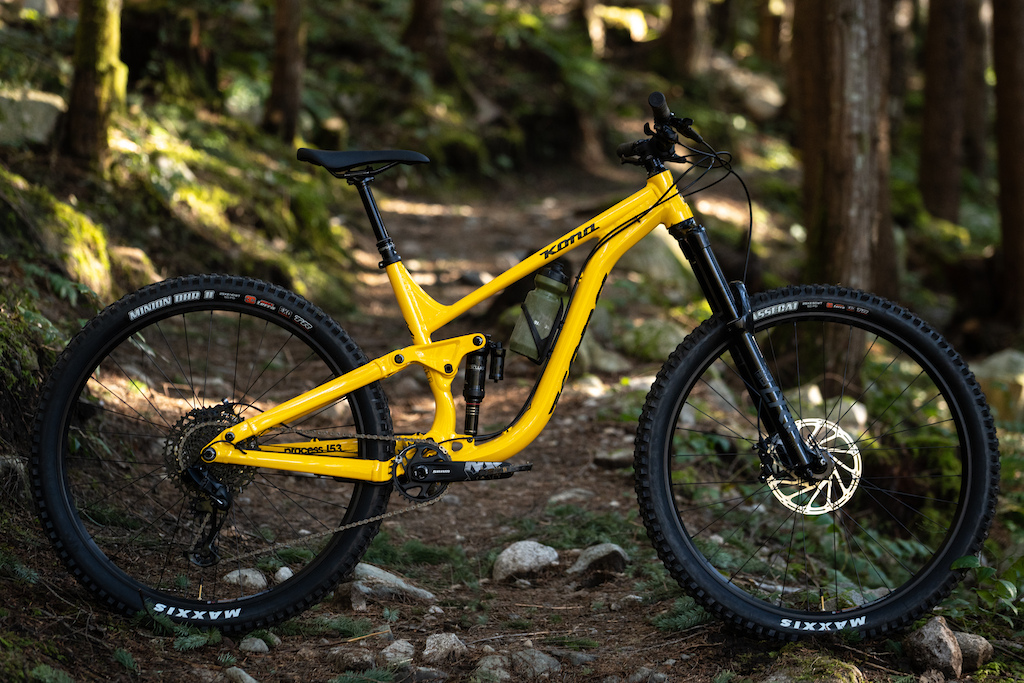



www.source.ca/product-category/filing-cabinets/?gclid=CjwKCAjwquWVBhBrEiwAt1KmwrxGctrjF5RbmA3dWmLo0b6a4OZDGvj67hQKz3G-wujOLNqN5lzHChoCkM8QAvD_BwE
Not tryin to be a dick, but knowing the difference might be useful to have in your back pocket some day.
The 1.5mm is obsolete. The 1.49mm thickness will allow for a higher quality pendaflex to be used, thereby increasing the bearing life of the slider.
watch out dentists, when the drawer opens and the golden glow of kashima is there
Still keeping the warden as a back up bike
Worth noting is that the exact same CS length, on a smaller sized frame, would certainly have behaved significantly differently in this regard and this should be considered by potential purchasers.
Well done Quinney.
Evil 152ening
the top Enduro riders are making bikes shorter and some steeper, The biggest view on this is Commencal, Theyve had to create a whole new shorter/steeper bike for Enduro racing. - the Norco range is similar with several riders back on the Sight.
Id argue what your describing is "AM or All-mountain" Style geo, The Manf's call it enduro but its really not when you look at what enduro is and thats Racing. Canyon Proved this point alot, made a monster bike that nobody will race in the suggested sizing, and with all the Canyon riders on spectrals at EWS this year... shows it again.
I have a couple of friends who've +1deg their headset in the sentinel, ive ridden 1 of the bikes and its so much sharper when not going down double blacks.
The sentinel is too slack for how little reach/cs it has(in large anyway) - The TR shop i bought mine from did say it was harder work to ride but i bought it anyway(they also said the spire takes this anther step)
and they offer me a Angle headset to steepen it up.
I've ridden and owned the 2021 trek slash but in 9.8 Variant, its alot more balanced and has a steeper HTA with slightly longer reach which is why they ride quite good and they have good all-rounder quantities(as also observed by reviewers)
in general, large and 475-480 reach bikes with 30-40cs length fits me perfect..
The large/s4 Sj evo fits me perfect, running as mullet with WRP link but ganna try the CC link probably.
the large spectral mullet also fit me very well.
This review has far too much of Henry’s opinion in it, and not enough of what Knolly’s philosophy is. It should be compared to the old 26” Chilcotin was. Knolly has always been about grip, low, and flickable nature. A reviewer should know this going in.
In the future would it be sufficient to express your opinion of said subject in such a way that would exemplify your opinion in such a manner that would help the lesser educated humans (like my freind) understand exactly
WTF your talking about
Less word more better @ak-77:
Funny how the Kona Process 153 has shorter chainstays than the Knolly - maybe there is something to be said about ratios? though a 12mm (or 2.5%) change in reach might be unnoticeable for novice riders.
While it will be impossible to remove subjectivity and personal preference altogether I think it would be an interesting study nonetheless!
I disagree....
There is a 26mm reach difference between the M and L, you ended up with a 35mm stem on the L, with a 50mm stem (pretty standard) on the M there would be a 10mm difference.
Taller rise bars are an easy solution as is a $2 spacer, all you'd need is a single 10mm spacer to more than offset the 7mm stack difference.
You were on the wrong size bike - straight up....
@RadBartTaylor:
Hump
And sure, Knolly is partially (or mostly) to blame here for suggesting the wrong size, but this has happened far too many times with PB reviews to use the old excuse, “they said it, so it’s not our fault…”
I don’t want to just complain, so here’s a suggestion. In cases where the reviewer suspects a conflict between recommended size and their preferred size, ask them to send you both. If they are unable to send two bikes, ask for the size that has reach numbers you know you’re comfortable with.
The PB review staff are all expert riders, y’all know when a bike will be way too long or short. It’s obvious Henry had his suspicions before it even shipped. If the reach is so long that your arms are nearly straight while descending, you won’t be able to move the bike around, and it won’t ride well. At that point, the chainstay length doesn’t even matter.
In this industry, Pinkbike reviews are highly consequential. They can literally make or break a product’s sales. After this review, I’ll bet Knolly would’ve happily sent you two bikes .
I have a pet theory that certain brands (Knolly) are built for short people and others (looking at you, Banshee) for taller riders. For me, in Phoenix, the Banshee Titan absolutely ate the Knolly’s lunch.
Lotta really great technical info in this review to parse. Awesome job.
I run a 180mm dropper in my Titan, size large. That's plenty of dropper.
The great thing is that there are so many awesome options on the market, we can all have an opinion and find the bike we love. That said, super long reach paired with super slack head angles and super steep seat angles is a creation of "this would look cool to our customers" vs. creating a well rounded package that actually works. That's just my opinion, of course, I'm not an engineer by any means.
My trailbike is a Fugitive LT in large. I'm the same size as Noel and find the fit good.
However, I don't think I would be as happy on the Fugitive 138 update with the even longer reach and steeper seat tube angle especially in my flatter / rolling terrain.
The Knolly travel options are... not my favorite. The 151/167 are identical aside from shock stroke; 0 reason to run it as a 151. If you want the firmer feel/more pop of a shorter travel bike... run your 167 with less sag. All you do with a 151 setup is find the end of the travel earlier.
So many companies are producing bikes that give a certain amount of travel, but then suggest it is fine to put a stroke limiter in your shock if you want to. Of course it's f*cking fine... The question is why would I want to?
Either the bike companies are cynically bullshitting their customers, or the company designers don't actually understand how suspension works. I'm not sure which of these is worse. (Sadly, I'm also not sure which is more likely to be true. Some of the frame layouts doing the rounds at the moment do tend to suggest that the "engineers" hired by a lot of companies are actually just "graphic designers")
In its stock setup, I found the bike to be just a tiny bit squirrely when the front end was bottomed out. Exactly when you don't want your bike to be squirrely. Bumping up to a 29er helped rollover, and dropping the fork travel made the bike slacker at bottom out. I feel like it rides the same in most ways, like the wheel size and travel change canceled each other out, but there are fewer times when things feel sketchy due to slacker geo at front end bottom out. An interesting change for sure.
Are you using the stock medium spring in the Selva? At 75kg, according to Formula, you're right between soft and medium:
65-75 kg : Soft
75-85 kg : Medium
85-95 kg : Firm
>95 kg: Super Firm
Welcome to the party! It's absolutely the only way to be for some trail areas, where there just aren't climbs long enough nor smooth enough to care about a couple mm of squat (or bob, but bob is more from pedaling squares than anti-squat), but there are many climbs where a loss of traction or getting hung up, and thus losing forward progress, drastically reduces the chances of cleaning the climb.
Frames are getting too long, when someone who is 2" taller than the average North American has to size down to a medum...
If your arms are nearly straight while descending, you can’t move the bike around effectively. We used to call this, “being at the end of your rope”. Your arms, just like your suspension, have to have sufficient travel.
Of course I have my bias because "hey look they're talking about my bike", but I wouldn't hesitate to recommend this bike to others.
I am VERY tall (6'5") and if I compare my bike the the XL Chilcotin, I see the latter's reach is 8 mm longer, the wheelbase is 5 mm longer and the stack is 3 mm lower. So if I equip the Chilcotin with a 40 mm stem (instead of the 50 mm that I ride on my bike), it would feel extremely close to my 150 mm AM bike. BUT (in capital letters) is that of importance to ANYBODY except me?
I guess not. So if I was a good rider, if I had the chops to analyze bikes and write an interesting review (non of which I have or can) I would probably not write about how much I like this bike feeling like my own ... because it's of no interest to anyone but me.
I guess that's the point here: The Chilcotin looks and reads like a VERY interesting bike, like a different interpretation of what I am used to, but with a perfect fit nevertheless. And this tests ... speaks too much about how Henry is not comfy on it due the dimensions being not "his". That's OK and understandable, but .... yeah ... you get it ...
PS: I am a HUGE fan of Henry's content (ever since that other gig on the eastern side of the pond) and especially his voice on the podcast ;o)
Also the sizing is weird.
Used to have a Knolly and the suspension is very good especially the pk is low it simply plows through the rough. I do not believe that a Kona with RS damper can keep up, maybe on mellow/machine built trails, but not in the proper chunk.
-pinkbike
Come on, you can do better than this Henry.
The fit is especific to each rider, to the point it is a science, and a service offered to every rider.
The bike should be tested after the fit is good. I personally love high bars and extra long chainstays.
We are also seeing lots of professional riders going for shorter reach because of this extra short chainstay combined with extra long reach gives an unbalanced feel.
I's all a can of worms.
Sir, you are an excellent reviewer with excellent writting skills. I love reading your insights, especially nerdy ones.
I know we spend a lot of money to get good bikes, and the need to change a handlebar or a stem might be a burden some are not willing to take, but fit is tailoring the instrument to your body.
I'd suggest to give the note that you had to change those parts to suit your body, but I sincerely can't see that as a drawback, just a minor inconvenience.
Cheers mate!
Ps: what happend to the nerding out about tire inserts? Could we get more testing on those?
Maybe nerding out about tire carcass too? the marriage between inserts and tires? The force needed to reach the rim at 22 psi?
Just some ideas...
Edit: I will also say the 160mm Warden rides like a much smaller bike, but has the extra travel. It’s a fun (big) little jibber
Edit2: Now I understand what you were saying. Damn, I can be dense sometimes…
Had a big bottom out on my V1 that I didn't like but not once on V2... that was perfect!
Knolly is pronounced like cannoli.
What the hell is going on?
They did this because america has stupid patent laws
All that being said, it's still a sweet bike, and Knolly seem like a supportive company, so lots to love about this thing (especially if you hit the sizing right).
And you thought Pinkbike staff don't read the comments...
Strong disagree. Some riders and some terrain conditions (sharpness, frequency, etc) just lends themselves towards strong tires and stiff forks, but maybe don't need more travel because the speeds and terrain size don't rate.
Still, a well done review Mr Quinney.
Yes, you could say that's a matter of personal preference, but I could have come to the same conclusion as Henry from looking at the geo chart and referencing my previous experiences.
That link is just marketing word salad
can we take a minute and talk about this completely transparent handjob? lmao....did SRAM write this for you? for serious, you couldn't make something up this egregiously counter to reality.
you can completely phone in a dropper/remote system, use lowest price suppliers from Mongolia, etc....the worst thing that happens is you have lots of warranty returns.
you do that with brakes? you get sued into oblivion by people that lost teeth and all memory from anytime before the incident.